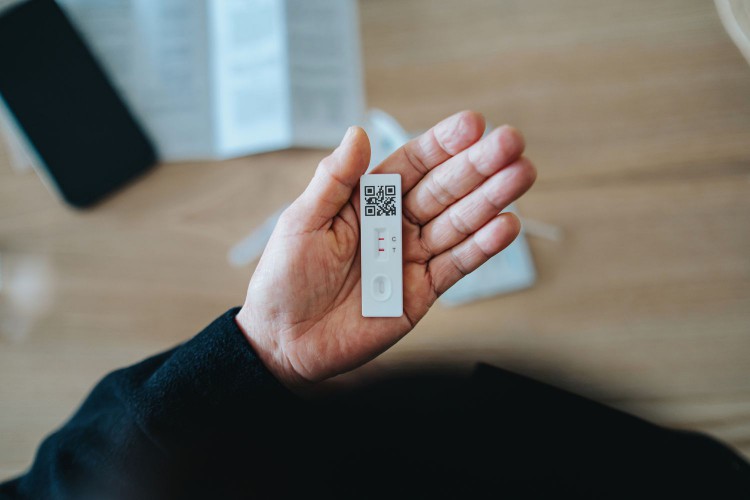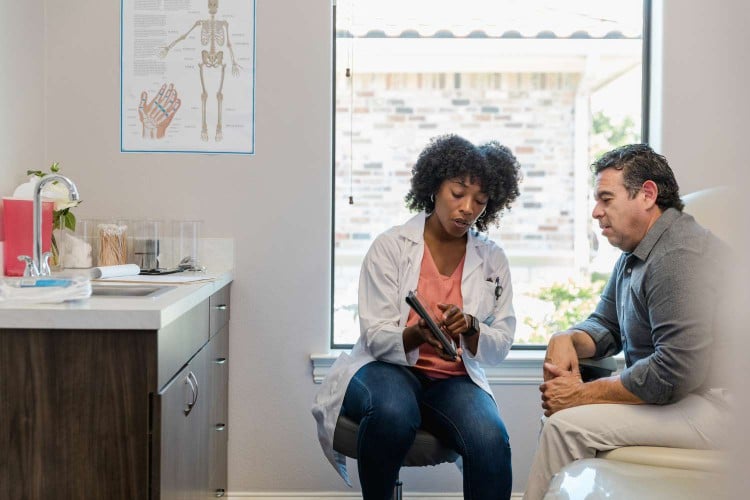The Biden administration recently announced that all US households would be eligible for four free mail-order COVID-19 tests starting September 25.
As cold weather arrives, the need to test for COVID-19 may be greater, but it may also be harder to differentiate COVID-19 symptoms from general cold and flu symptoms.
Experts recommend following testing protocol as laid out by the CDC and making sure any home tests you use are up-to-date.
If you have the sniffles, should you immediately take a COVID test?
Deaths and hospitalizations from COVID have risen in recent weeks, and experts say the US could see an uptick in cases in the coming months, as respiratory viruses start to circulate.
That said, COVID cases aren’t nearly as bad as they were at the start of the pandemic.
“[COVID] is nowhere near as unmanageable as it was,” said Amesh Adalja, MD, a biosecurity and emerging infectious diseases expert at Johns Hopkins Bloomberg School of Public Health.
However, the US is likely to see excess illnesses—and deaths—if Americans don’t embrace all the resources they have to slow the spread of the virus this cold and flu season, Thomas Russo, MD, an infectious diseases expert at the University of Buffalo Jacobs School of Medicine and Biomedical Sciences, told Health.
“We’ve got the tools, so let’s use them,” he said.
Perhaps the most obvious tool available to understand and stop the spread of COVID-19 is the COVID test.
The Biden administration recently announced that all American households will be eligible for four free mail-order COVID tests beginning September 25. Orders can be placed at COVIDTests.gov.
However, according to experts, when—and how often—you should test largely depends on your individual circumstances.

Test immediately
If you’re only going to take one test, opt for a PCR test since they’re more reliable
If you take an antigen test instead and get a negative result, re-test yourself in 48 hours or go in for a PCR test as soon as possible
The agency recommends a slightly different protocol if you’ve been exposed to COVID but aren’t experiencing any symptoms:
Wait five full days after the exposure to take a test
If you’re only going to take one test, go for a PCR test since they’re more reliable
If you take an antigen test instead and get a negative result, re-test yourself in 48 hours or go in for a PCR test as soon as possible
If your second antigen test is negative, wait another 48 hours and then take a third antigen test
Creating the Best Testing Habits For Yourself
If you’ve been exposed to COVID, it’s always in your best interest to test yourself, Russo said. Given that we may see an uptick in cases this winter, he recommends making sure your COVID tests are all up-to-date.
“A good strategy is to have these home tests on board,” he said.
It’s trickier to determine if you need to test because you’re experiencing symptoms compared to needing to test because of a confirmed exposure, Joseph Khabbaza, MD, a pulmonary medicine specialist at Cleveland Clinic, told Health.
That’s partially because the symptoms have gotten harder to spot as COVID-19 symptoms. And, public urgency toward testing has decreased.
At the beginning of the pandemic, patients were more likely to consider the fact that they might have COVID, and not just the common cold, than they are now, Khabbaza explained.
“There has been a lot of confusion this past year as severity of illness has gotten milder—with the strains becoming milder—and less unique symptoms,” he explained. “We’re hearing more and more of people who are really surprised they had COVID because their symptoms [felt like] usual stuff.”
Symptoms of COVID-19
According to the CDC, symptoms of COVID-19 might include:
Fever
Chills
Cough
Difficulty breathing
Shortness of breath
Fatigue
Headache
Body or muscle aches
New loss of taste or smell
Runny nose or congestion
Sore throat
Diarrhea
Nausea or vomiting
Per the CDC, certain COVID-19 symptoms should prompt you to get emergency medical attention, including persistent pressure or pain in the chest, trouble breathing, new confusion, the inability to wake up or stay awake, or discoloration in the skin, lips, or nail beds.
As to whether or not you need to test if you’re experiencing any symptoms, much of that comes down to two things: Your health and the health of the people you interact with.
“Things to be aware of are our personal risk factors and [if] you may have to be around high-risk people,” Khabbaza said. If you—or someone you regularly see—have an increased risk of a bad outcome from COVID, like severe disease or death, you should test if you’re experiencing symptoms.
Given how many millions of people are considered high-risk, testing is definitely the safer route, especially if you do in-person work or frequently find yourself in public spaces for other reasons, Dr. Russo said. “We’re all in pre-pandemic mode,” he added.
Who Is Considered 'High-Risk' For COVID-19?
Many people fall into the high-risk category, including people with asthma, cancer, chronic kidney or liver disease, diabetes, HIV, obesity, or mental health conditions.
Pregnant people, people who are 50 or older, people who currently smoke or used to smoke, people who have received an organ transplant, and people who have not been vaccinated against COVID—or those who aren’t up-to-date on their vaccinations—are also considered high-risk.
If you are not high-risk and you don’t think you’ll be around high-risk people, it can be difficult to know whether to test, experts say. Much of your decision may come down to whether your illness seems more serious than the common cold.
“Most of us have had a bad cold,” Khabazza said. “But if it feels different than that, even if it’s a vague [difference], it’s worth testing.”
If you don’t know what to do, experts recommend erring on the side of testing. “You can never be too cautious or safe,” Khabazza reiterated.
Additionally, it’s still a good idea to test before going to a large gathering, like a wedding, Russo added.
Many doctors’ offices and urgent care centers are now testing all patients exhibiting flu-like symptoms for three common respiratory viruses—COVID-19, respiratory syncytial virus (RSV), and influenza.
“You can get them in one swoop, which, of course, you can’t do at home,” Khazabba said.
It’s especially true if your symptoms are getting increasingly worse and you’re basing the assumption that you don’t have COVID on a negative at-home test, since these tests are sometimes unreliable.
Following the recommended guidelines is the best way to keep yourself and your community healthy and avoid overtaxing the healthcare system this winter, Russo said.
“We really have the tools to minimize the consequences, but we’re underutilizing those tools,” he said. “If people had used these tools, we would have had a significant impact in decreasing mortality.”








